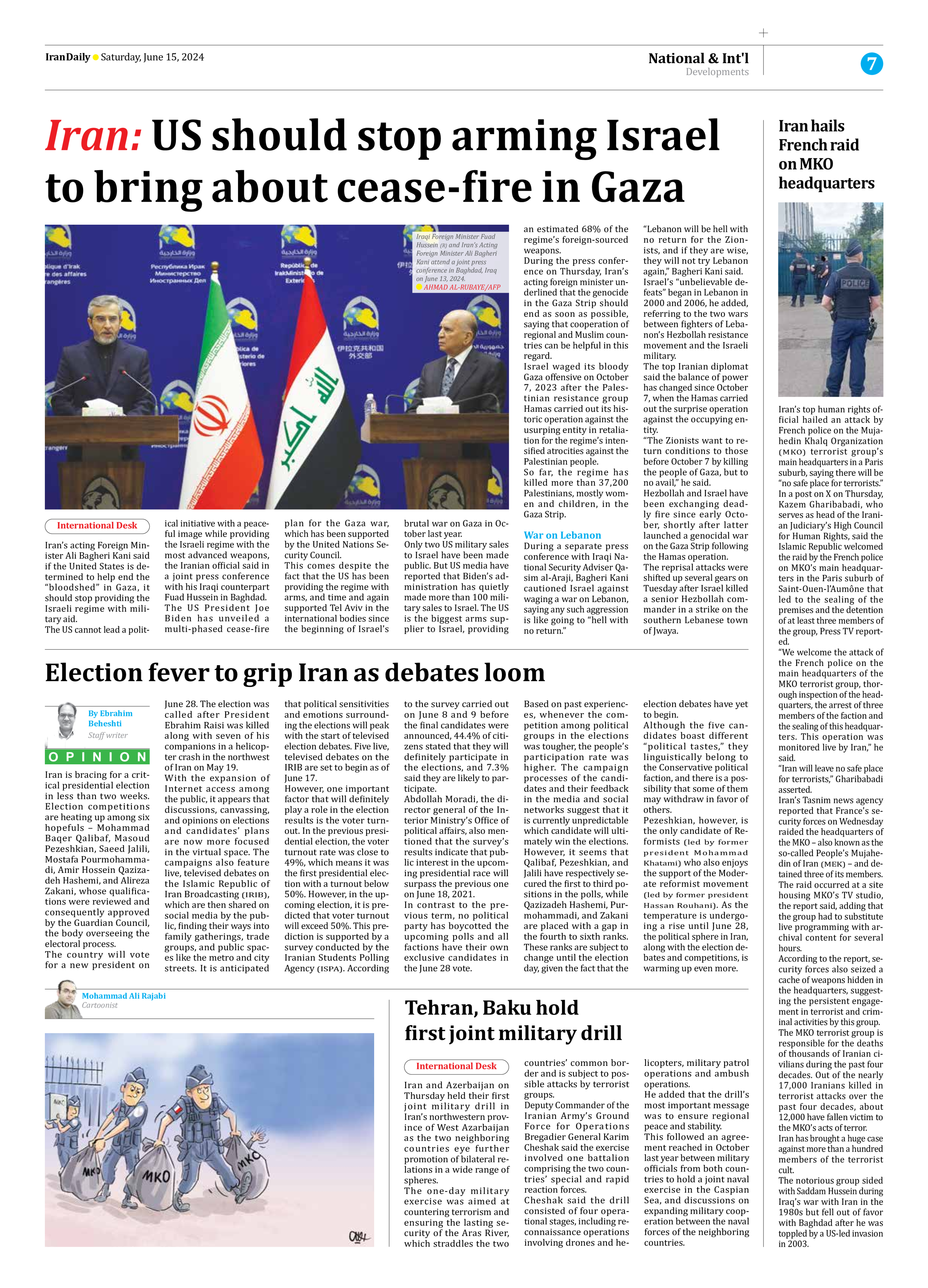
Election fever to grip Iran as debates loom
By Ebrahim Beheshti
Staff writer
Iran is bracing for a critical presidential election in less than two weeks. Election competitions are heating up among six hopefuls – Mohammad Baqer Qalibaf, Masoud Pezeshkian, Saeed Jalili, Mostafa Pourmohammadi, Amir Hossein Qazizadeh Hashemi, and Alireza Zakani, whose qualifications were reviewed and consequently approved by the Guardian Council, the body overseeing the electoral process.
The country will vote for a new president on June 28. The election was called after President Ebrahim Raisi was killed along with seven of his companions in a helicopter crash in the northwest of Iran on May 19.
With the expansion of Internet access among the public, it appears that discussions, canvassing, and opinions on elections and candidates’ plans are now more focused in the virtual space. The campaigns also feature live, televised debates on the Islamic Republic of Iran Broadcasting (IRIB), which are then shared on social media by the public, finding their ways into family gatherings, trade groups, and public spaces like the metro and city streets. It is anticipated that political sensitivities and emotions surrounding the elections will peak with the start of televised election debates. Five live, televised debates on the IRIB are set to begin as of June 17.
However, one important factor that will definitely play a role in the election results is the voter turnout. In the previous presidential election, the voter turnout rate was close to 49%, which means it was the first presidential election with a turnout below 50%. However, in the upcoming election, it is predicted that voter turnout will exceed 50%. This prediction is supported by a survey conducted by the Iranian Students Polling Agency (ISPA). According to the survey carried out on June 8 and 9 before the final candidates were announced, 44.4% of citizens stated that they will definitely participate in the elections, and 7.3% said they are likely to participate.
Abdollah Moradi, the director general of the Interior Ministry’s Office of political affairs, also mentioned that the survey’s results indicate that public interest in the upcoming presidential race will surpass the previous one on June 18, 2021.
In contrast to the previous term, no political party has boycotted the upcoming polls and all factions have their own exclusive candidates in the June 28 vote.
Based on past experiences, whenever the competition among political groups in the elections was tougher, the people’s participation rate was higher. The campaign processes of the candidates and their feedback in the media and social networks suggest that it is currently unpredictable which candidate will ultimately win the elections. However, it seems that Qalibaf, Pezeshkian, and Jalili have respectively secured the first to third positions in the polls, while Qazizadeh Hashemi, Purmohammadi, and Zakani are placed with a gap in the fourth to sixth ranks. These ranks are subject to change until the election day, given the fact that the election debates have yet to begin.
Although the five candidates boast different “political tastes,” they linguistically belong to the Conservative political faction, and there is a possibility that some of them may withdraw in favor of others.
Pezeshkian, however, is the only candidate of Reformists (led by former president Mohammad Khatami) who also enjoys the support of the Moderate reformist movement (led by former president Hassan Rouhani). As the temperature is undergoing a rise until June 28, the political sphere in Iran, along with the election debates and competitions, is warming up even more.







